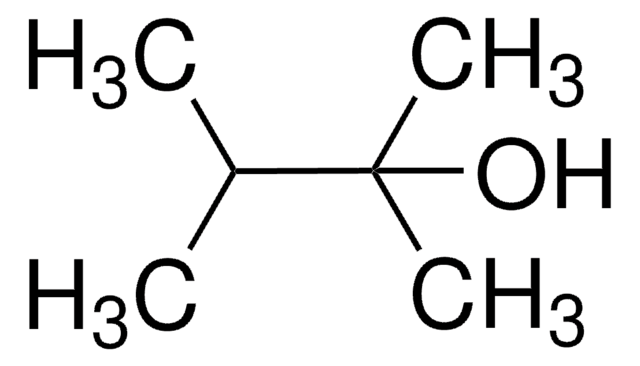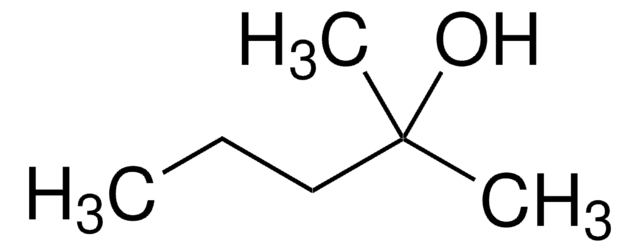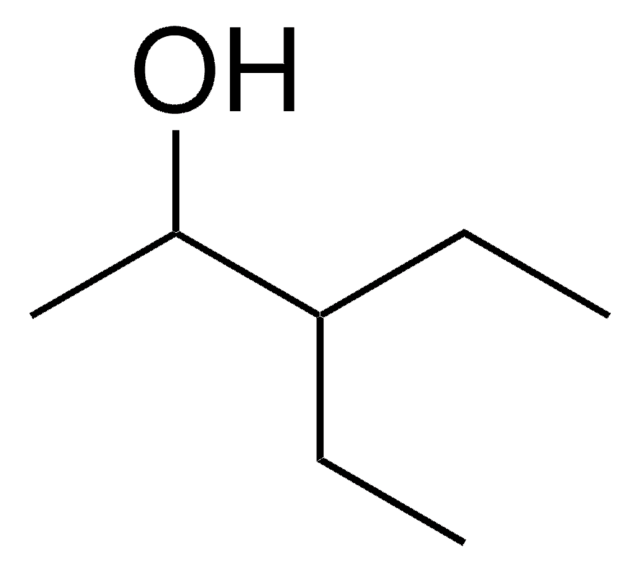111570
3-Ethyl-3-pentanol
98%
Sinónimos:
Triethylcarbinol
About This Item
Productos recomendados
Nivel de calidad
Análisis
98%
índice de refracción
n20/D 1.430 (lit.)
bp
141 °C/743 mmHg (lit.)
densidad
0.824 g/mL at 25 °C (lit.)
grupo funcional
hydroxyl
cadena SMILES
CCC(O)(CC)CC
InChI
1S/C7H16O/c1-4-7(8,5-2)6-3/h8H,4-6H2,1-3H3
Clave InChI
XKIRHOWVQWCYBT-UHFFFAOYSA-N
¿Está buscando productos similares? Visita Guía de comparación de productos
Aplicación
Palabra de señalización
Warning
Frases de peligro
Consejos de prudencia
Clasificaciones de peligro
Flam. Liq. 3
Código de clase de almacenamiento
3 - Flammable liquids
Clase de riesgo para el agua (WGK)
WGK 3
Punto de inflamabilidad (°F)
100.4 °F - closed cup
Punto de inflamabilidad (°C)
38 °C - closed cup
Equipo de protección personal
Eyeshields, Faceshields, Gloves, type ABEK (EN14387) respirator filter
Elija entre una de las versiones más recientes:
¿Ya tiene este producto?
Encuentre la documentación para los productos que ha comprado recientemente en la Biblioteca de documentos.
Nuestro equipo de científicos tiene experiencia en todas las áreas de investigación: Ciencias de la vida, Ciencia de los materiales, Síntesis química, Cromatografía, Analítica y muchas otras.
Póngase en contacto con el Servicio técnico









